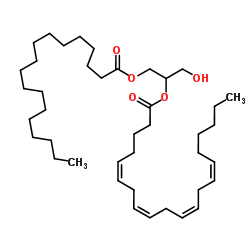Relationship between total and free cellular Mg(2+) during metabolic stimulation of rat cardiac myocytes and perfused hearts.
M Fatholahi, K LaNoue, A Romani, A Scarpa
Index: Arch. Biochem. Biophys. 374(2) , 395-401, (2000)
Full Text: HTML
Abstract
The changes in total Mg were compared with changes in cytosolic free Mg(2+) during metabolic stimulation of collagenase-dispersed rat cardiac myocytes or Langendorff-perfused rat hearts. In myocytes the addition of agents leading to cAMP increase or protein kinase C activation results in a loss or gain of more than 5% of total Mg content within 3 min (i.e., 3-4 nmol Mg/mg protein). Under the same conditions, changes in cytosolic free Mg(2+) measured with fluorescent indicator are small and result in changes of cytosolic free Mg(2+) equivalent to 90-140 microM. In perfused hearts, beta-adrenergic stimulation results in a loss of total Mg larger than 0.5 micromol per gram of heart corresponding to 9% loss of total Mg content of the heart (estimated to be 5.8 micromol). Under these conditions there is no change in cytosolic free Mg(2+) or the major buffer of cytosolic Mg(2+), ATP, as measured by (31)P NMR. These data suggest that a major redistribution of total Mg occurs in intracellular organelles or in cytosolic buffers in order to maintain cytosolic free Mg(2+) relatively unchanged during the observed cellular massive translocation of total Mg. Hence, Mg(2+) may regulate metabolic functions not within the cytosol but in locations where its concentration oscillates, such as extracellular fluid and intracellular compartments.Copyright 2000 Academic Press.
Related Compounds
| Structure | Name/CAS No. | Molecular Formula | Articles |
|---|---|---|---|
 |
1-Stearoyl-2-arachidonoyl-sn-glycerol
CAS:65914-84-3 |
C41H72O5 |
|
Diacylglycerol kinase η1 is a high affinity isozyme for diac...
2015-05-08 [FEBS Lett. 589 , 1272-7, (2015)] |
|
Melanopsin-expressing amphioxus photoreceptors transduce lig...
2012-01-01 [PLoS ONE 7 , e29813, (2012)] |
|
Metabolic fate of plasma membrane diacylglycerols in NIH 3T3...
1992-07-25 [J. Biol. Chem. 267(21) , 14783-9, (1992)] |
|
Diacylglycerol-containing oleic acid induces increases in [C...
2012-04-01 [Biochim. Biophys. Acta 1821(4) , 618-26, (2012)] |
|
Generation of diacylglycerol molecular species through the c...
2002-03-01 [J. Cell Sci. 115(Pt 5) , 983-9, (2002)] |